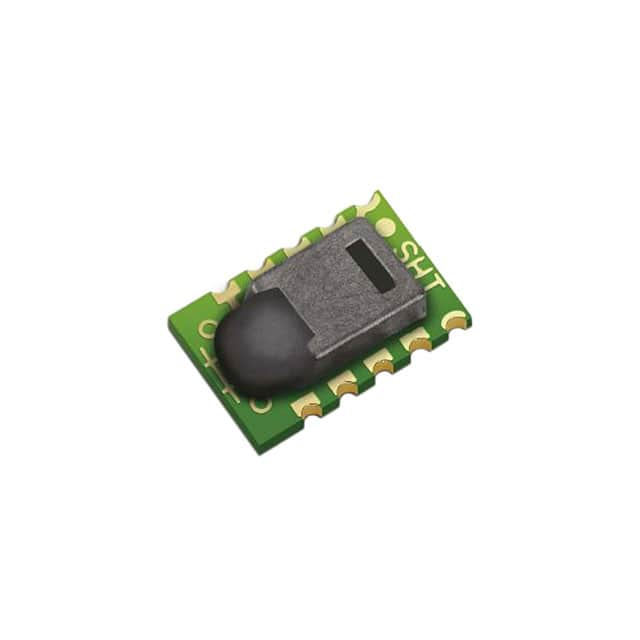Veja as especificações para detalhes do produto.

SHT10 Sensor
Introduction
The SHT10 sensor is a digital humidity and temperature sensor designed for various applications. This entry provides an overview of the SHT10 sensor, including its product category, basic information, specifications, pin configuration, functional features, advantages and disadvantages, working principles, application field plans, and alternative models.
Product Category
The SHT10 sensor belongs to the category of environmental sensors, specifically designed for measuring humidity and temperature in different environments.
Basic Information Overview
- Use: The SHT10 sensor is used to measure relative humidity and temperature in various applications.
- Characteristics: It offers high accuracy, long-term stability, low power consumption, and digital output.
- Package: The sensor is typically available in a compact and durable package suitable for integration into different devices and systems.
- Essence: The essence of the SHT10 sensor lies in its ability to provide precise and reliable measurements of humidity and temperature.
- Packaging/Quantity: The sensor is commonly available in individual packaging with specified quantities per package.
Specifications
The SHT10 sensor specifications include: - Measurement Range: 0-100% RH (Relative Humidity), -40 to 125°C (Temperature) - Accuracy: ±3% RH, ±0.5°C - Supply Voltage: 2.4V to 5.5V - Interface: Digital (I2C interface) - Response Time: 8 seconds (typical)
Detailed Pin Configuration
The SHT10 sensor typically has four pins: 1. VDD (Power supply) 2. DATA (Data line for communication) 3. SCK (Clock signal for communication) 4. GND (Ground)
Functional Features
The key functional features of the SHT10 sensor include: - High Accuracy: Provides precise measurements of humidity and temperature. - Digital Output: Offers digital data output for easy integration with microcontrollers and other digital systems. - Low Power Consumption: Suitable for battery-powered applications. - Long-Term Stability: Maintains consistent performance over extended periods.
Advantages and Disadvantages
Advantages
- Accurate measurement of humidity and temperature
- Digital output for easy interfacing
- Low power consumption
- Long-term stability
Disadvantages
- Relatively higher cost compared to some analog sensors
- Limited to digital interface only
Working Principles
The SHT10 sensor utilizes a capacitive humidity sensor and a band-gap temperature sensor to measure relative humidity and temperature. The capacitive sensor measures changes in capacitance due to humidity, while the band-gap sensor provides accurate temperature measurements. The sensor then processes the data and provides digital output through the I2C interface.
Detailed Application Field Plans
The SHT10 sensor finds applications in various fields, including: - HVAC (Heating, Ventilation, and Air Conditioning) systems - Weather stations - Industrial automation - Consumer electronics - Agriculture and greenhouse monitoring
Detailed and Complete Alternative Models
Some alternative models to the SHT10 sensor include: - SHT11 sensor - SHT15 sensor - DHT22 sensor - HDC1080 sensor
In conclusion, the SHT10 sensor is a versatile and reliable solution for measuring humidity and temperature in diverse applications, offering high accuracy, digital output, and low power consumption.
Word Count: 470

